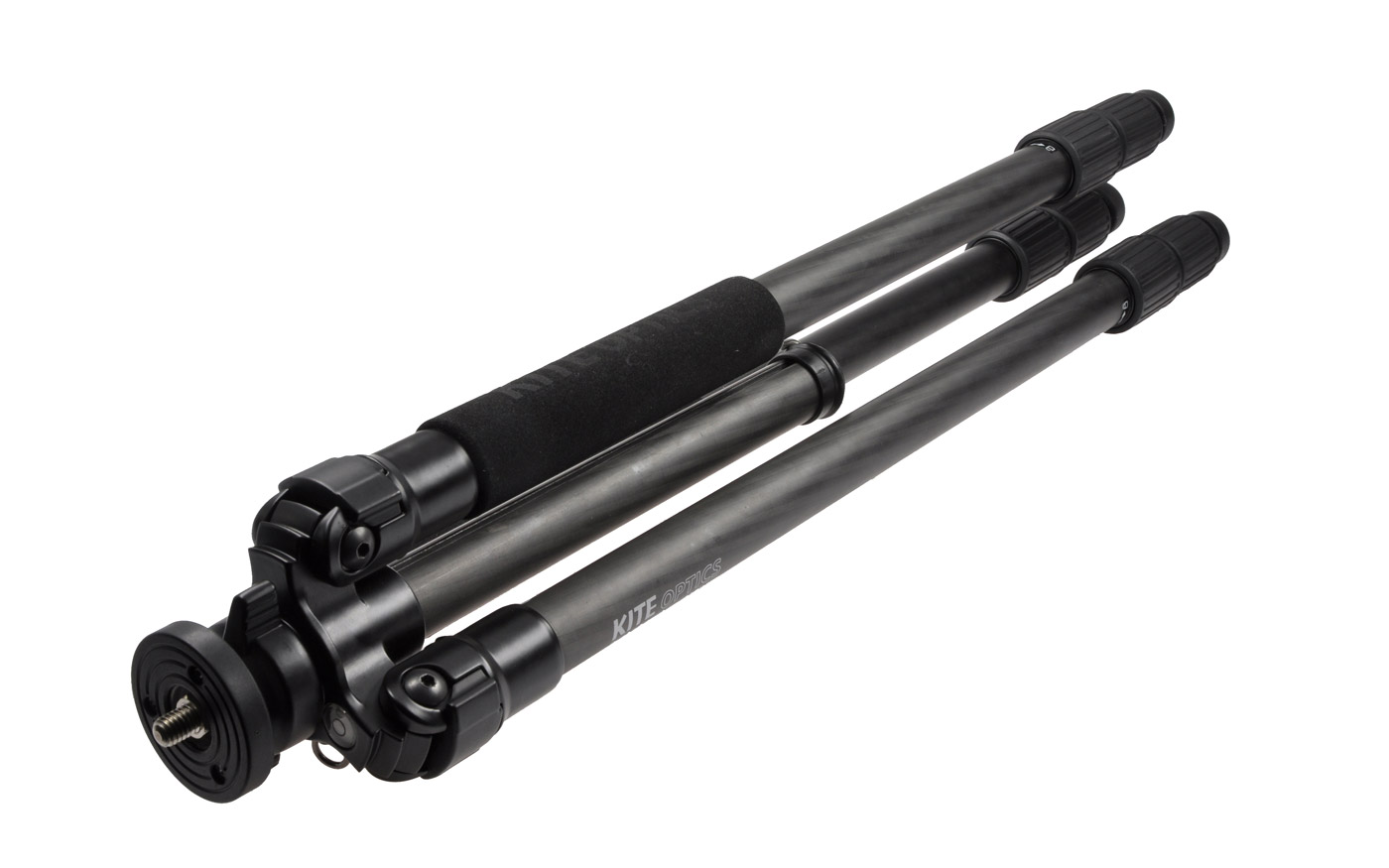Kite Optics Ardea CF tripod
Kite Optics continues its inroads into the birding optics market with the introduction of an improved version of its established Ardea CF carbon-fibre tripod. There is just the one model and it's designed to cater for all users, regardless of height. Before delving deeper into the pros and cons, though, it should be noted that it is 'legs-only' equipment which can be purchased with or without a head.
While we're talking heads, Kite is offering the Manfrotto 128RC as standard to complete the package, while generally recommending the heads of either Manfrotto and Gitzo to complement the tripod. Other heads are available, of course, but for testing purposes, I used a Gitzo GHF2W 2-way head, reviewed in Birdwatch 323: 56-57.
The tripod itself comprises three leg sections, all of which are three-twist carbon fibre, while the 'central spider' – including hinges, angle-setting mechanism and head-mounting platform – is magnesium alloy. Two of the top leg sections are wrapped in durable foam covers, increasing the comfort factor by extending the 'soft' area of the tripod in contact with the body when the equipment is carried over the shoulder.

There are distinct advantages associated with having just three leg sections. Put simply, the more leg sections, the less stable the tripod and the more susceptible it is to vibration. In this model, the lowest section has a diameter of 22 mm, which also helps to increase stability over tripods with a narrower fourth section.
Furthermore, if the tripod legs are secured in position by twist-locks – which they are on the Ardea – the more leg sections, the longer it takes to extend and secure them and the greater your chances of overlooking one of the locks in haste, which could result in a collapsed tripod. Not ideal when you need to leap out the car quickly to scope that passing raptor!
I was pleased to have only two lock-levels to operate, their grippy, rubber-milled rings offering good three-finger contact. The leg sections extend smoothly under gravity, while should one of the locks become inadvertently loosened, there is a built-in anti-collapse mechanism, whereby one twist loosens the lock and a second twist is required to release the leg.
The fully extended tripod legs, including the attached head, brought my angled scope to the perfect viewing height on level ground (I am 1.83 m) without me having to extend the centre column, which is there to add flexibility in uneven terrain. The latter is also of carbon fibre construction and sports a springed hook to which weights can be added to further increase stability, if desired.
In the field, I found this tripod generally light in weight and easy to carry, as well as being clearly sturdy and stable in moderately windy conditions. It is said to be capable of supporting a generous 12 kg of equipment, including the head.
It comes with a padded zip-up carrying bag, carry strap, optional spiked feet – which are interchangeable with the fitted rubber feet – and a tool kit for adjusting the apical leg bolts, removal of head mount and securing the chosen head. A word of advice, however, is to tighten the rubber feet as much as possible before first use and to check their tension regularly as they are prone to working loose with repeated use.
Should repairs and spares be required, these are available in the UK through the agents, Alpha Optical Distribution (www.alphaodl.co.uk). Kite will shortly be launching a less expensive, aluminium version of this tripod, which is expected to be available from late March or early April.
Further info
- Price: £299
- Material: carbon fibre
- Weight: 1,450 g
- Maximum support weight, including head: 12 kg
- Collapsed length: 630 mm
- Maximum height, centre column down: 1,425 mm
- Maximum height, centre column extended: 1,650 mm
- Minimum height: 325 mm
- Number of leg sections: 3
- Leg locking system: twist lock
- Guarantee: 2 years
Verdict
+ Light in weight and easy to carry
+ Sturdy and stable
- Rubber feet prone to working loose with repeated use


